不同水體的氫氧穩(wěn)定同位素可用于植物水分利用來源��、水汽輸送����、土壤水運(yùn)移和補(bǔ)給機(jī)制���、補(bǔ)給源和地下水機(jī)制����、水體蒸發(fā)、植物蒸騰和土壤蒸發(fā)的區(qū)分�����、徑流的形成和匯合���、重建古氣候等方面的研究���。因而引起了水文學(xué)家,生態(tài)學(xué)家以及氣候?qū)W家等的廣泛關(guān)注�����。但問題是:在進(jìn)行水穩(wěn)定同位素測試之前如何將植物木質(zhì)部和土壤中的水分無分餾的提取出來��?
LI-2100是LICA自主研發(fā)的一款全自動真空冷凝抽提系統(tǒng)��,且已通過CE認(rèn)證�。從根本上解決了植物和土壤水分提取的難題�,克服了傳統(tǒng)液氮冷卻的繁瑣��,不僅可以防止同位素分餾����,而且安全高效��,不會對植物和土壤造成破壞�。可與LGR水同位素分析儀和質(zhì)譜儀配套使用�。許多科學(xué)家已經(jīng)結(jié)合LI-2100和LGR的水同位素進(jìn)行了諸多研究。
從研發(fā)生產(chǎn)至今�,LI-2100在國內(nèi)已經(jīng)銷售了近百臺,國內(nèi)的科研工作者利用這臺儀器發(fā)表了諸多文獻(xiàn)�,得到了用戶的眾多好評。
隨著LI-2100在國內(nèi)的廣泛應(yīng)用及眾多文獻(xiàn)的發(fā)表�����,國外的一些科學(xué)家也開始關(guān)注理加公司研發(fā)生產(chǎn)的LI-2100�,理加公司也積極在海外推廣該產(chǎn)品,由此拉開了LI-2100走出國門�����、走向海外的序幕����。
LI-2100在海外的安裝案例
1.?巴西國家空間研究所(INPE)
應(yīng)用:利用LI-2100抽提土壤���、植物中的水,進(jìn)行同位素相關(guān)研究��。
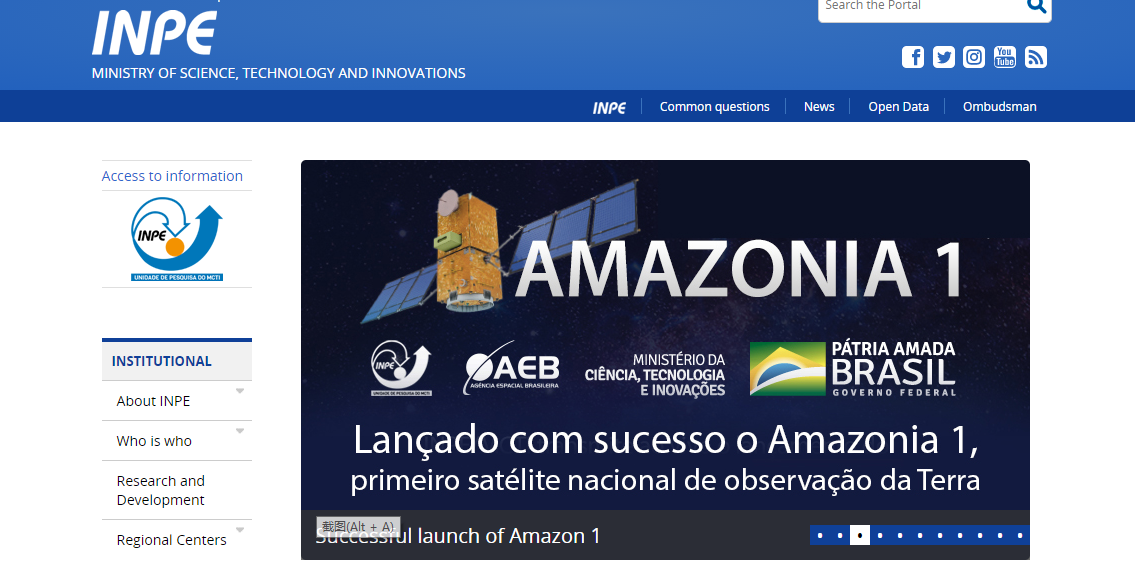
科學(xué)家簡介:
Laura De Simone Borma (勞拉·德·西蒙娜·博爾瑪)
1988 年畢業(yè)于歐魯普雷圖聯(lián)邦大學(xué)土木工程專業(yè)����,1991 年獲得里約熱內(nèi)盧聯(lián)邦大學(xué)土木工程碩士學(xué)位,以及里約熱內(nèi)盧聯(lián)邦大學(xué)土木工程-環(huán)境巖土工程博士學(xué)位(1998)���。自 2009 年起在 INPE(國家空間研究所)擔(dān)任研究員��,從事生態(tài)水文學(xué)和土壤物理學(xué)領(lǐng)域的工作�����,重點(diǎn)是實(shí)地觀察陸地和極端天氣事件對土壤-植物-大氣相互作用以及氣候變化、土地利用和覆蓋變化的影響���。她目前是 INPE 的 PGCST(地球系統(tǒng)科學(xué)研究生)和 PGSER(遙感研究生)的教授��。協(xié)調(diào) CCST/INPE 的生態(tài)水文學(xué) (LabEcoh) 和生物地球化學(xué) (LapBio) 實(shí)驗(yàn)室���。她是 ISMC(國際土壤建模聯(lián)盟)的成員�����。她對巴西不同生物群落中土壤-植物-大氣相互作用�����、生態(tài)水文學(xué)以及水和氣候調(diào)節(jié)的生態(tài)系統(tǒng)服務(wù)領(lǐng)域的研究感興趣����。
2.?澳大利亞Flinders大學(xué) College of Science and Engineering
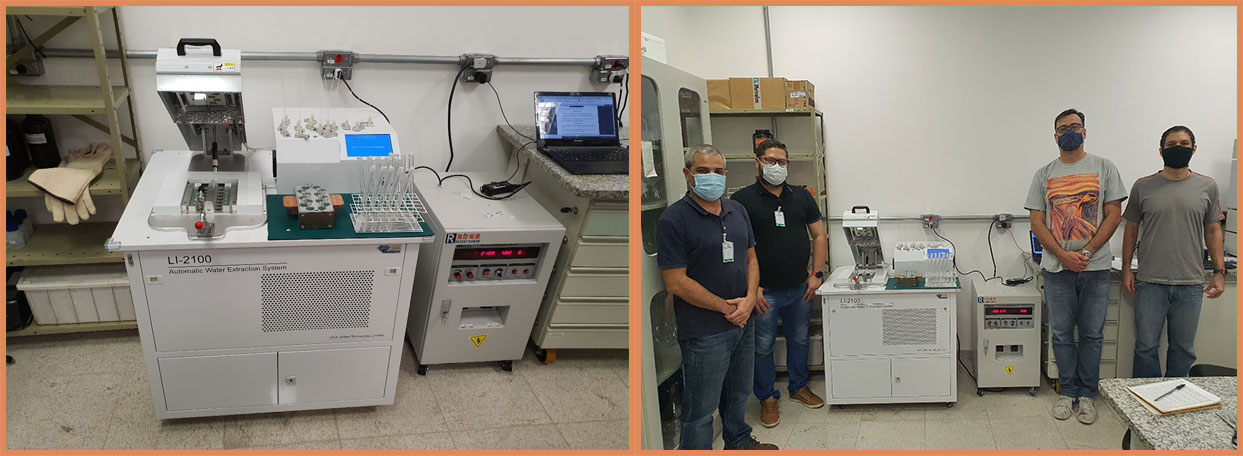
應(yīng)用:利用LI-2100抽提土壤����、植物中的水,進(jìn)行同位素相關(guān)研究��。
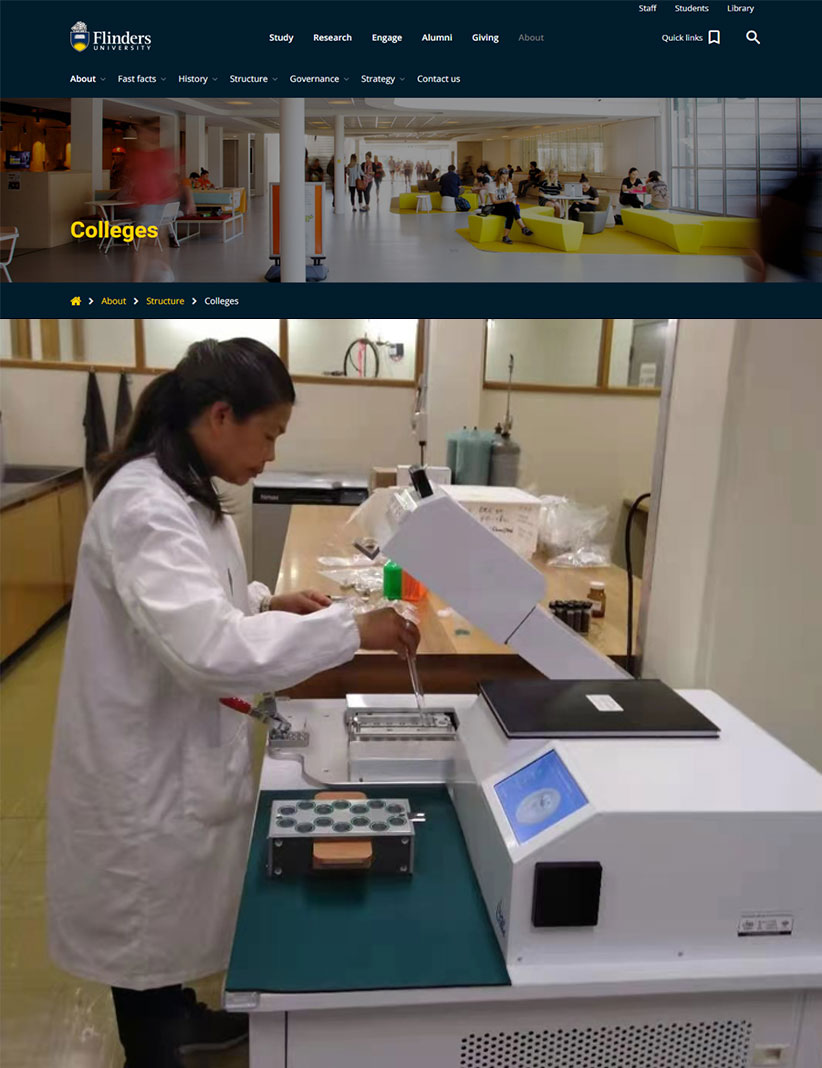
LI-2100在國內(nèi)的安裝案例
1.?中國煤炭研究所
應(yīng)用:利用LI-2100抽提土壤�����、植物中的水�,進(jìn)行同位素相關(guān)研究。
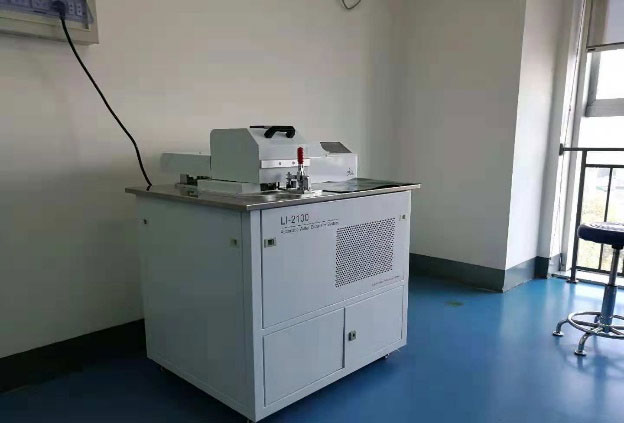
2.?中國科學(xué)院西雙版納熱帶植物園
應(yīng)用:利用LI-2100抽提土壤�����、植物中的水,進(jìn)行同位素相關(guān)研究���。
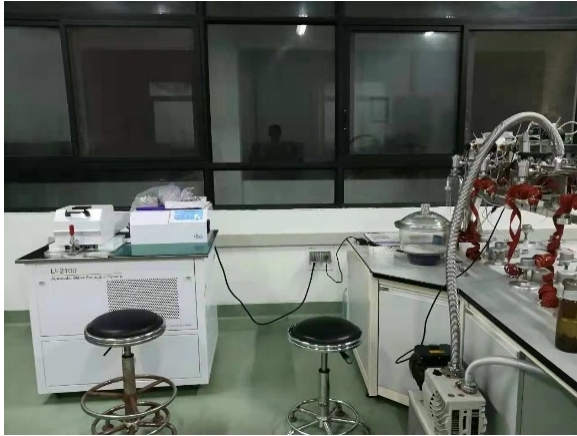
3. 中國林業(yè)科學(xué)研究院亞熱帶林業(yè)研究所
應(yīng)用:利用LI-2100抽提土壤�����、植物中的水�����,進(jìn)行同位素相關(guān)研究�。
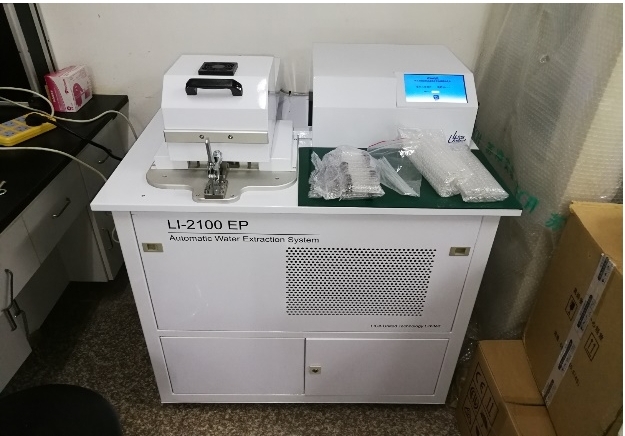
4. 沈陽氣象局
應(yīng)用:利用LI-2100抽提土壤�����、植物中的水�����,進(jìn)行同位素相關(guān)研究����。
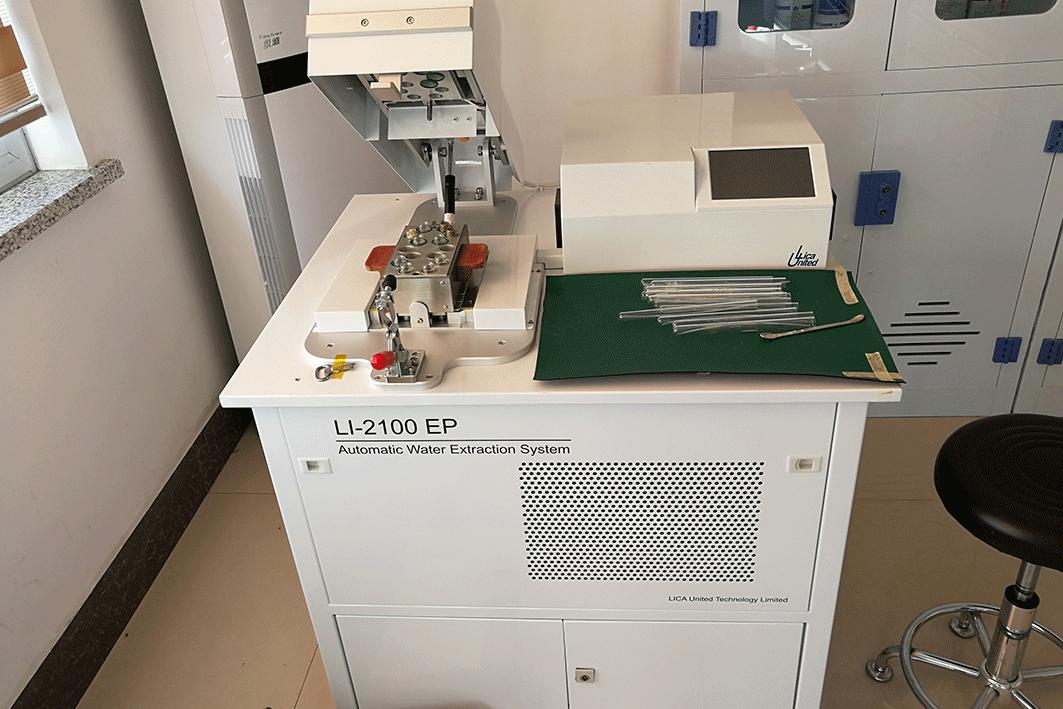
5. 廣西植物園
應(yīng)用:利用LI-2100抽提土壤、植物中的水����,進(jìn)行同位素相關(guān)研究。
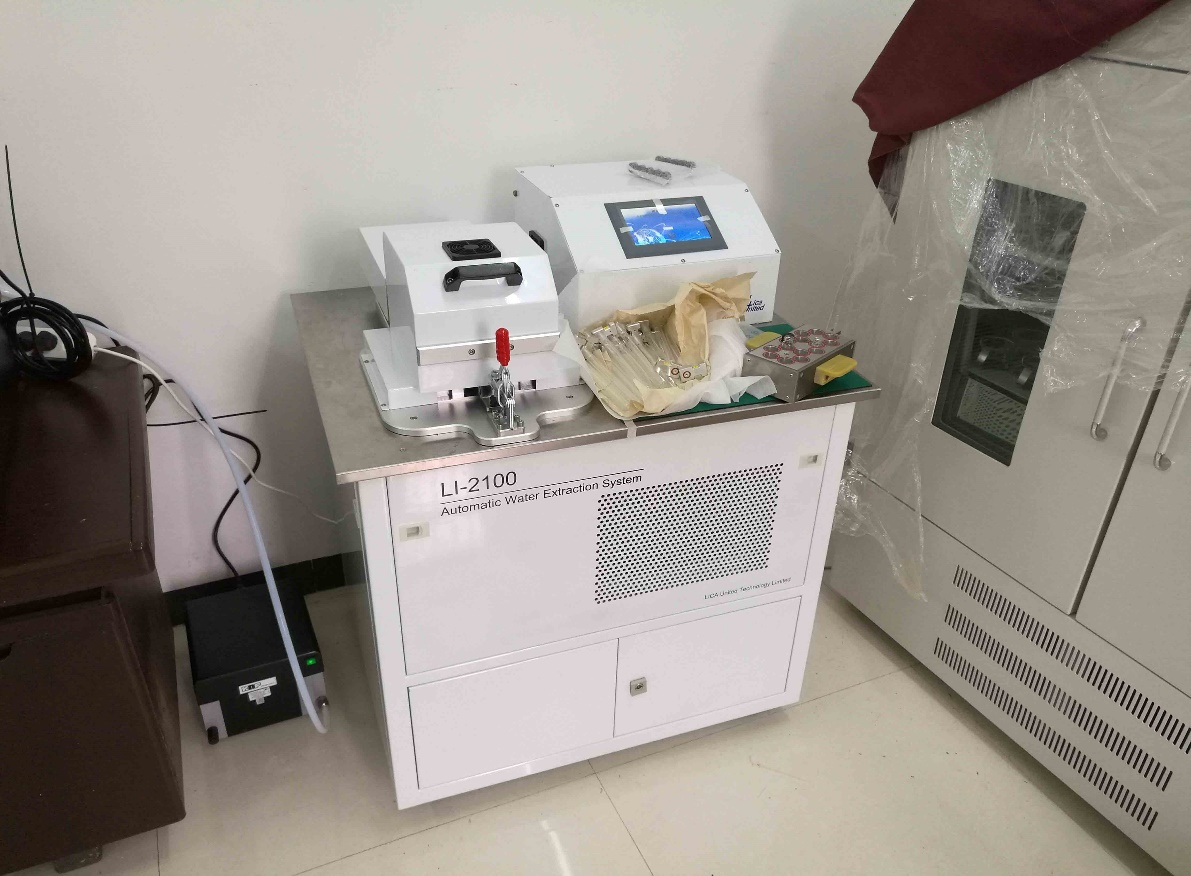
發(fā)表文獻(xiàn)
1.?周盼盼, 張明軍, 王圣杰等. 2016. 蘭州城區(qū)綠化植物穩(wěn)定氫氧同位素特征. 生態(tài)學(xué)雜志, 35(11): 2942-2951.
2.?李亞飛, 于靜潔, 陸凱等. 2017. 額濟(jì)納三角洲胡楊和多枝檉柳水分來源解析. 植物生態(tài)學(xué)報, 41(5): 519-528.
3.?李桐,?邱國玉.?2018.?基于穩(wěn)定氫氧同位素的鹽水與純水蒸發(fā)差異分析.?熱帶地理,?38?(6):?857-865.
4.?霍偉杰, 蒲俊兵, 李建鴻等. 2019. 斷陷盆地高原面典型巖溶洼地旱季土壤水氫氧同位素時空差異特征.中國巖溶����,38(3): 307-317.
5.?戴軍杰, 章新平, 羅紫東等. 2019. 長沙地區(qū)樟樹林土壤水穩(wěn)定同位素特征及其對土壤水分運(yùn)動的指示. 環(huán)境科學(xué)研究,32(6): 974-983.
6.?蘇鵬燕, 張明軍, 王圣杰等. 2020.?基于氫氧穩(wěn)定同位素的黃河蘭州段河岸植物水分來源. 應(yīng)用生態(tài)學(xué)報����, 31(6):1835-1843.
7.?孜爾蝶·巴合提, 賈國棟, 余新曉. 2020. 基于穩(wěn)定同位素分析不同退化程度小葉楊水分來源, 應(yīng)用生態(tài)學(xué)報, 31(6):1807-1816.
8.?王露霞,?梁杏,?李靜.?2020. 基于典型鉆孔的江漢平原地下水成因分析. 地球科學(xué),?45(2): 701-710.
9.?王銳,?章新平, 戴軍杰等. 2020.?亞熱帶地區(qū)不同林分下植物水分利用的季節(jié)差異.?生態(tài)環(huán)境學(xué)報,?29(4): 665-675.
10.?Qiu X, Zhang MJ, Wang SJ. 2016. Preliminary research on hydrogen and oxygen stable isotope characteristics of different water bodies in the Qilian Mountains, northwestern Tibetan Plateau. Environmental Earth Sciences, 75(23):1491.
11.?Wang J, Fu BJ, Lu N et al. 2017. Seasonal variation in water uptake patterns of three plant species based on stable isotopes in the semi-arid Loess Plateau. Science of the Total Environment, 609: 27-37.
12.?Huang XY, Meyers PA. 2018. Assessing paleohydrologic controls on the hydrogen isotope compositions of leaf wax n-alkanes in Chinese peat?deposits. Palaeogeography, Palaeoclimatology, Palaeoecology, doi: 10.1016/j.palaeo.2018.12.017.?
13.?Sun L, Yang L, Chen LD et al. 2018. Short-term changing patterns of stem water isotopes in shallow soils underlain by fractured bedrock. Hydrology Research, doi: 10.2166/nh.2018.086.?
14.?Zhang YG, YU XX, Chen LH. 2018. Comparison of the partitioning of evapotranspiration –numerical modeling with different isotopic models using various kinetic fractionation coefficients. Plant and Soil, 430: 307-328, https://doi.org/10.1007/s11104-018-3737-z.?
15.?Zhao X, Li FD, Ai ZP et al. 2018. Stable isotope evidences for identifying crop water uptake in a typical winter wheat–summer maize rotation field in the North China Plain. Science of the Total Environment, 121-131.
16.?Zhu G, Guo H, Qin, D et al. 2018. Contribution of recycled moisture to precipitation in the monsoon marginal zone: estimate based on stable isotope data.?Journal of Hydrology, doi: 10.1016/j.jhydrol.2018.12.014.?
17.?Che CW, Zhang MJ, Argiriou AA et al. 2019. The stable isotopic composition of different water bodies at the Soil–Plant–Atmosphere Continuum (SPAC) of the western Loess Plateau, China, Water, doi:10.3390/w11091742.
18.?Li EG, Tong YQ, Huang YM et al. 2019. Responses of two desert riparian species to fluctuation groundwater depths in hyperarid areas of Northwest China. Ecohydrology, 1-12.?
19.?Liu JC, Shen LC, Wang ZX et al. 2019. Response of plants water uptake patterns to tunnels excavation based on stable isotopes in a karst trough valley. Journal of Hydrology, 571: 485-493.
20.?Liu Y, Zhang XM, Zhao S et al. 2019. The depth of water taken up by walnut trees during different phenological stages in an irrigated arid hilly area in the Taihang Mountains. Forests, doi:10.3390/f10020121.?
21.?Liu Z, Ma FY, Hu TX et al. 2019. Using stable isotopes to quantify water uptake from different soil layers and water use efficiency of wheat under long-term tillage and straw return practices. Agricultural Water Management, https://doi.org/10.1016/j.agwat.2019.105933.
22.?Luo ZD, Guan HD, Zhang XP et al. 2019. Examination of the ecohydrological separation hypothesis in a humid subtropical area: Comparison of three methods. Journal of Hydrology, 571, 642-650.?
23.?Qiu X, Zhang MJ, Wang SJ et al. 2019. The test of the ecohydrological separation hypothesis in a dry zone of the northeastern Tibetan Plateau. Ecohydrology, https://doi.org/10.1002/eco.2077.
24.?Qiu X, Zhang MJ, Wang SJ et al. 2019. Water stable isotopes in an Alpine setting of the northeastern Tibetan Plateau. Water, doi:10.3390/w11040770.
25.?Wang J, Fu BJ, Lu N et al. 2019. Water use characteristics of native and exotic shrub species in the semi-arid Loess Plateau using an isotope technique.?Agriculture,?Ecosystems and Environment, 276: 55-63.?
26.?Wang J, Lu N, Fu BJ. 2019. Inter-comparison of stable isotope mixing models for determining plant water source partitioning.?Science of the Total Environment, 666: 685-693.?
27.?Wu?X, Zheng?XJ, Li Y, Xu GQ. 2019. Varying responses of two Haloxylon?species to extreme drought and groundwater depth. Environmental and Experimental Botany, 158, 63-72.
28.?Xu YY, Yi Y, Yang X, Dou YB. 2019. Using stable hydrogen and oxygen isotopes to distinguish the sources of plant leaf surface moisture in an urban environment. Water, doi:10.3390/w11112287.?
29.?Dai JJ, Zhang XP, Luo ZD et al. 2020. Variation of the stable isotopes of water in the soil-plant-atmosphere continuum of a Cinnamomum camphora woodland in the East Asian monsoon region.?Journal of Hydrology, https://doi.org/10.1016/j.jhydrol.2020.125199.?
30.?Jiang PP, Wang HM, Meinzer FC et al. 2020. Linking reliance on deep soil water to resource economy strategies and abundance among coexisting understorey shrub species in subtropical pine plantations. New Phytologist, doi: 10.1111/nph.16027.?
31.?Liu L, Bai YX, She WW et al. 2020. A nurse shrub species helps associated herbaceous plants by preventing shade‐induced evaporation in a desert ecosystem. Land Degradation and Development, https://doi.org/10.1002/ldr.3831.?
32.?Liu Z, Ma FY, Hu TX. 2020. Using stable isotopes to quantify water uptake from different soil layers and?water use efficiency of wheat under long-term tillage and straw return practices.?Agricultural Water Management, https://doi.org/10.1016/j.agwat.2019.105933.?
33.?Pan YX, Wang XP, Ma XZ et al. 2020.?The stable isotopic composition variation characteristics of desert plants and water sources in an artificial revegetation ecosystem in Northwest China. Catena, https://doi.org/10.1016/j.catena.2020.104499.?
34.?Su?PY, Zhang MJ, Qu DY?et al. 2020. Contrasting water use strategies of Tamarix ramosissima?in different habitats in the Northwest of Loess Plateau, China. Water, 12, 2791; doi:10.3390/w12102791.?
35.?Wang J, Fu BJ, Wang LX et al. 2020. Water use characteristics of the common tree species in different plantation types in the Loess Plateau of China. Agricultural and Forest Meteorology, https://doi.org/10.1016/j.agrformet.2020.108020.?
36.?Xiang W, Evaristo J, Li Z. 2020. Recharge mechanisms of deep soil water revealed by water isotopes in deep loess deposits. Geoderma, https://doi.org/10.1016/j.geoderma.2020.114321.?
37.?Xiao?X, Zhang F, Li XY?et al. 2020. Hydrological functioning of thawing soil water in a permafrost-influenced alpine meadow hillslope. Vadose Zone Journal, doi: 10.1002/vzj2.20022.
38.?Yang B, Meng XJ, Singh AK et al. 2020. Intercrops improve surface water availability in rubber-based agroforestry systems. Agriculture, Ecosystems and Environment, 298, 106937.
39.?Yang B, Zhang WJ, Meng XJ et al. 2020. Effects of a funnel-shaped canopy on rainfall redistribution and plant water acquisition in a banana (Musa spp.) plantation. Soil, Tillage Research, https://doi.org/10.1016/j.still.2020.104686.
40.?Yong?LL, Zhu GF, Wan QZ?et al. 2020. The Soil Water Evaporation Process from Mountains?Based on the Stable Isotope Composition?in a Headwater Basin and Northwest China. Water, 12, 2711; doi:10.3390/w12102711.?
41.?Zhang Y, Zhang MJ, Qu DY et al. 2020. Water use strategies of dominant species (Caragana korshinskii and Reaumuria soongorica) in natural shrubs based on stable isotopes in the Loess Hill, China.?Water, doi:10.3390/w12071923.?
42.?Zhang YG, Wang DD, Liu ZQ et al. 2020.?Assessment of leaf water enrichment of Platycladus orientalis using numerical modeling with different isotopic models. Ecological Indicators, https://doi.org/10.1016/j.ecolind.2019.105995.?
43.?Li?Y, Ma Y, Song XF et al. 2021. A δ2H offset correction method for quantifying root water uptake of riparian trees. Journal of Hydrology,?https://doi.org/10.1016/j.jhydrol.2020.125811.?
44.?Yang B, Meng XJ, Zhu XA?et al. 2021. Coffee performs better than amomum as a candidate in the rubber?agroforestry system: Insights from water relations. Agricultural Water Management, doi.org/10.1016/j.agwat.2020.106593.?
45.?Qiu?X,?Zhang MJ, Dong ZW et al. 2021. Contribution of Recycled Moisture to Precipitation in Northeastern Tibetan Plateau: A Case Study Based on Bayesian Estimation. Atmosphere, 12, 731. https://doi.org/10.3390/ atmos12060731.?
LI-2100特點(diǎn)
1.?沿用傳統(tǒng)經(jīng)典的真空蒸餾冷凍方法,數(shù)據(jù)可靠
2.?無需液氮:壓縮機(jī)制冷�����,提高安全性
3.?快速高效:一次可同時提取14個樣品
4.?全自動抽提:全過程無人值守
5.?安全便捷:自我斷電與自我保護(hù)功能
6.?質(zhì)量控制:故障提示與自動報警
7.?全球首創(chuàng):專利技術(shù)
? ? ? ?8. 氫氧穩(wěn)定同位素前處理
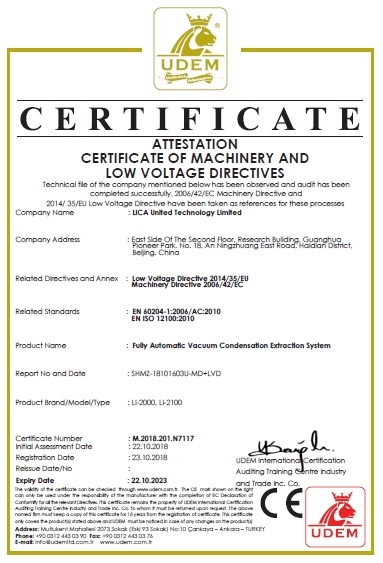
性能指標(biāo)
提取速度 | >110 個/天 |
可同時提取樣品數(shù) | 14 個 |
系統(tǒng)真空度 | <1000 Pa |
系統(tǒng)漏率 | <1 Pa/s |
抽提率 | >98% |
回收率 | 99%-101% |
真空泵 | 5?L/min, 24?V, 最大壓力, 0.3bar |
制冷 | 無需液氮��,壓縮機(jī)與冷阱結(jié)合�,最低制冷溫度可達(dá) -95℃ |
制熱 | 電磁制熱,最高制熱溫度可達(dá) 130℃ |
顯示與操作 | TFT LCD (12寸�, 800*480; 65536). 觸摸式人機(jī)友好交互界面 |
自動保護(hù) | 溫度過高或超出設(shè)定溫度值,加熱系統(tǒng)自動關(guān)閉 |
自動報警 | 制冷系統(tǒng)故障提示并報警與真空泄露故障報警 |
尺寸 | 90 cm (H)×74 cm (W)×110 cm (D) |
重量 | 120 Kg |
LI-2100是國際上第一款全自動植物土壤真空抽提系統(tǒng)�,也是國內(nèi)全自動植物土壤真空抽提系統(tǒng)的領(lǐng)導(dǎo)品牌。LI-2100為客戶取得更為準(zhǔn)確的數(shù)據(jù)提供了有利的方法和保障。理加公司專注國產(chǎn)生態(tài)儀器的研發(fā)和生產(chǎn)����,是國內(nèi)生態(tài)領(lǐng)域自主研發(fā)比較早、國產(chǎn)化比較好的一家公司��。相信隨著加大研發(fā)的投入和市場及時間的積累��,理加公司一定會生產(chǎn)出更多����、更好的生態(tài)儀器,給更多的國內(nèi)外客戶提供更有價值的產(chǎn)品���。
海外市場的拓展不是一條容易走的路��,但理加會堅(jiān)定的走出去���。